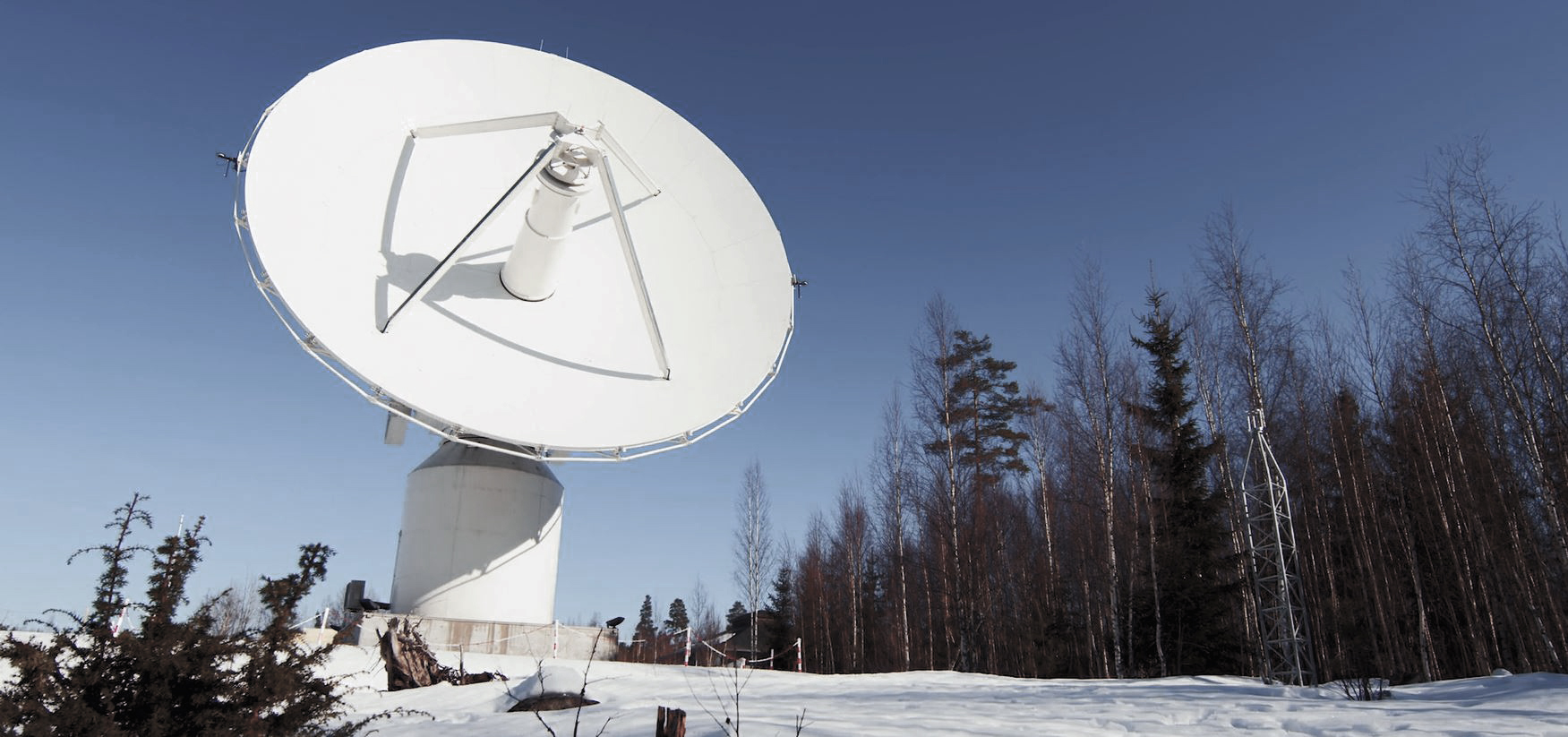
Geodetic Very Long Baseline Interferometry (GeoVLBI) is a space-based technique that allows for accurate measurements of the Earth and its orientation, in inertial space. The Finnish Geospatial Research Institute has participated in IVS observations since 2004. The S/X VLBI observations were performed using a 13.7 m antenna located at the Metsähovi Radio Observatory of Aalto University. These observations were ended in 2021. A new VLBI2010 Global Observing System (VGOS) telescope has been built in 2018-1019 at the Metsähovi Geodetic Research Station. It is under the commissioning phase and become operational soon. The new telescope will be a part of the international VGOS network. The main goals of VGOS are continuous observations to monitor Earth orientation parameters and station positions with the goal of 1 mm accuracy in position and 0.1 mm/yr in velocity.
VLBI technique is based on observations of compact radio sources with radio telescopes distributed around the globe. The observed radio sources are called quasars and are located billions of light years from the Earth. They define an inertial frame in which the Earth’s orientation is measured. Telescopes simultaneously record the radio signals from quasars. At each radio telescope station, the signal is time-stamped with very precise atomic clocks. Afterward, all data are collected and processed at the correlation centers, where differences in arrival times of signals at the various telescopes (time delays) are determined. From the time delay observation it is possible to estimate and study various geodetic parameters.
Geodetic VLBI contributes to:
- Terrestrial Reference Frame (TRF)
- Celestial Reference Frame (CRF)
- Earth Orientation Parameters (EOP) – UT1, polar motion, nutation, precession
- Troposphere parameters
- Geophysical models (ocean tides, Earth solid tides, Earth crust deformation and plate motion, post- glacial rebound, etc.)
More details on VGOS are available in this publication, as well as all recent developments and upgrade on Metsähovi.
Contact information:
Joona Eskelinen (+ 358 50 472 9544)
Nataliya Zubko (+358 50 528 0640)
